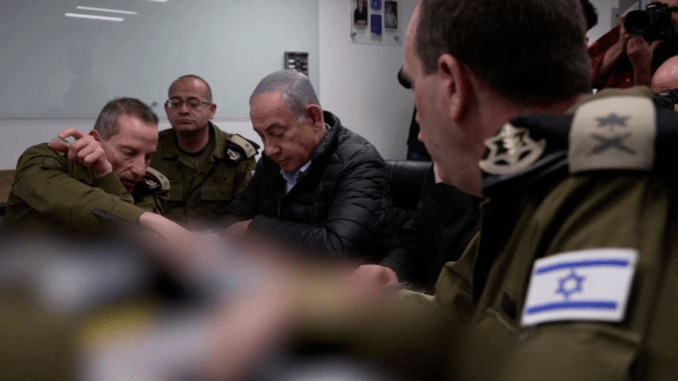
Israeli Airstrikes have specifically targeted Iranian military sites, according to information released by the Israeli Defence Forces (IDF) earlier today.
Israeli force’s precise airstrikes on military targets in Iran mark a significant expansion of the ongoing hostilities in the middle east. This military action follows a missile attack on Israel earlier this month, allegedly carried out by Iranian-backed forces. The strikes represent a crucial moment in the conflict, which has already seen heavy casualties, particularly in Gaza, where hospitals and civilian shelters remain under siege.
The developments have ignited international concern, with experts warning that the situation could spiral into a broader regional war, further complicating efforts at diplomacy. The targeted airstrikes in Iran signal that Israel is not only focusing on the immediate conflict with Hamas and Hezbollah but is also willing to confront Iranian interests directly in response to provocations. With Iran being a key supporter of both Hamas and Hezbollah, this move could deepen the conflict across multiple fronts.
Israel’s Strategic Airstrikes on Iranian Military Sites
According to defense officials, the Israeli Defense Forces (IDF) carried out these targeted strikes against military installations in Iran, specifically aiming at missile depots, command centers, and other strategic locations. The strikes were reported to have hit areas near Tehran, signaling Israel’s determination to respond to the missile attacks originating from Iranian-backed groups operating in the region.
The missile attack that prompted this escalation occurred earlier in October, when a barrage of rockets targeted southern Israel. Israeli defense sources claim that these missiles were launched by Iranian proxies, possibly Hezbollah or other factions allied with Tehran. While Israel’s Iron Dome missile defense system intercepted many of the rockets, the attack nonetheless highlighted the growing threat posed by Iran’s influence and its support of militant groups in neighboring countries.
The IDF has made it clear that these strikes were a defensive measure aimed at neutralizing the capability of Iranian forces to continue supplying arms and strategic support to militant groups such as Hamas and Hezbollah. A spokesperson for the Israeli military stated, “We will take every necessary step to protect the citizens of Israel and ensure that Iran’s military infrastructure is degraded to prevent future attacks.”
Worsening Conditions in Gaza Amid Israeli Offensive
While Israeli forces engage Iranian military assets, the situation in Gaza remains dire. Over the past month, Israel has conducted a full-scale offensive in the Gaza Strip in response to the deadly Hamas attack on Israeli civilians on October 7. The airstrikes in Gaza have been relentless, with Israeli forces targeting what they describe as military infrastructure and Hamas operatives.
However, reports from humanitarian organizations paint a grim picture of the conditions on the ground. Hospitals in Gaza are struggling to cope with the influx of casualties, many of whom are civilians caught in the crossfire. The United Nations has expressed concern over the bombing of hospitals, schools, and other critical infrastructure in the densely populated region, warning that these actions could constitute war crimes under international law.
Medical facilities are operating beyond capacity, and power shortages have left much of the population without access to clean water or sanitation. The World Health Organization (WHO) has called for a ceasefire to allow for the safe evacuation of injured civilians and the delivery of essential medical supplies.
The humanitarian crisis in Gaza has drawn international condemnation, with protests erupting in cities around the world. Calls for a ceasefire have grown louder, but diplomatic efforts have so far failed to achieve any tangible results. The United States and other Western powers continue to back Israel’s right to defend itself, but they are also urging restraint in the face of mounting civilian casualties.
Diplomatic Efforts and the Risk of a Broader Conflict
The recent escalation into Iran has heightened fears that the conflict could spread beyond the current theaters of war in Gaza and Lebanon. Iran has condemned the Israeli strikes, calling them an act of aggression, and vowed to retaliate. Iranian officials have hinted at the possibility of launching further missile strikes against Israeli targets, a move that could ignite a broader regional conflict involving multiple state actors.
The United States, which has long been Israel’s staunchest ally, has dispatched Secretary of State Antony Blinken to the region in an attempt to broker a diplomatic resolution. Blinken has been clear in his message that while the U.S. supports Israel’s right to self-defense, Washington does not want to see the conflict expand further. “We are working around the clock to de-escalate the situation and find a peaceful solution,” Blinken said in a press conference earlier this week. However, as airstrikes continue and both sides dig in, the path to peace seems more elusive than ever.
As Israeli forces extend their military campaign to target Iranian sites, the potential for a broader regional conflict looms large. While Israel seeks to neutralize threats posed by Iranian-backed forces, the humanitarian toll in Gaza continues to rise, with no immediate end in sight. Diplomatic efforts remain ongoing, but the widening scope of the conflict presents new challenges for peace and stability in the region.
The world watches as the Middle East teeters on the brink of a larger war, with Israel, Iran, Hamas, and Hezbollah all embroiled in a deadly game of power. The next few weeks will be crucial in determining whether diplomacy can stem the tide of violence, or if the region is headed toward an even more destructive phase of conflict.
Israeli forces’ military campaign expansion to target Iranian sites, the potential for a broader regional conflict looms large. While Israel seeks to neutralize threats posed by Iranian-backed forces, the humanitarian toll in Gaza continues to rise, with no immediate end in sight. Diplomatic efforts remain ongoing, but the widening scope of the conflict presents new challenges for peace and stability in the region.
The world watches as the Middle East teeters on the brink of a larger war, with Israel, Iran, Hamas, and Hezbollah all embroiled in a deadly game of power. The next few weeks will be crucial in determining whether diplomacy can stem the tide of violence, or if the region is headed toward an even more destructive phase of conflict.

